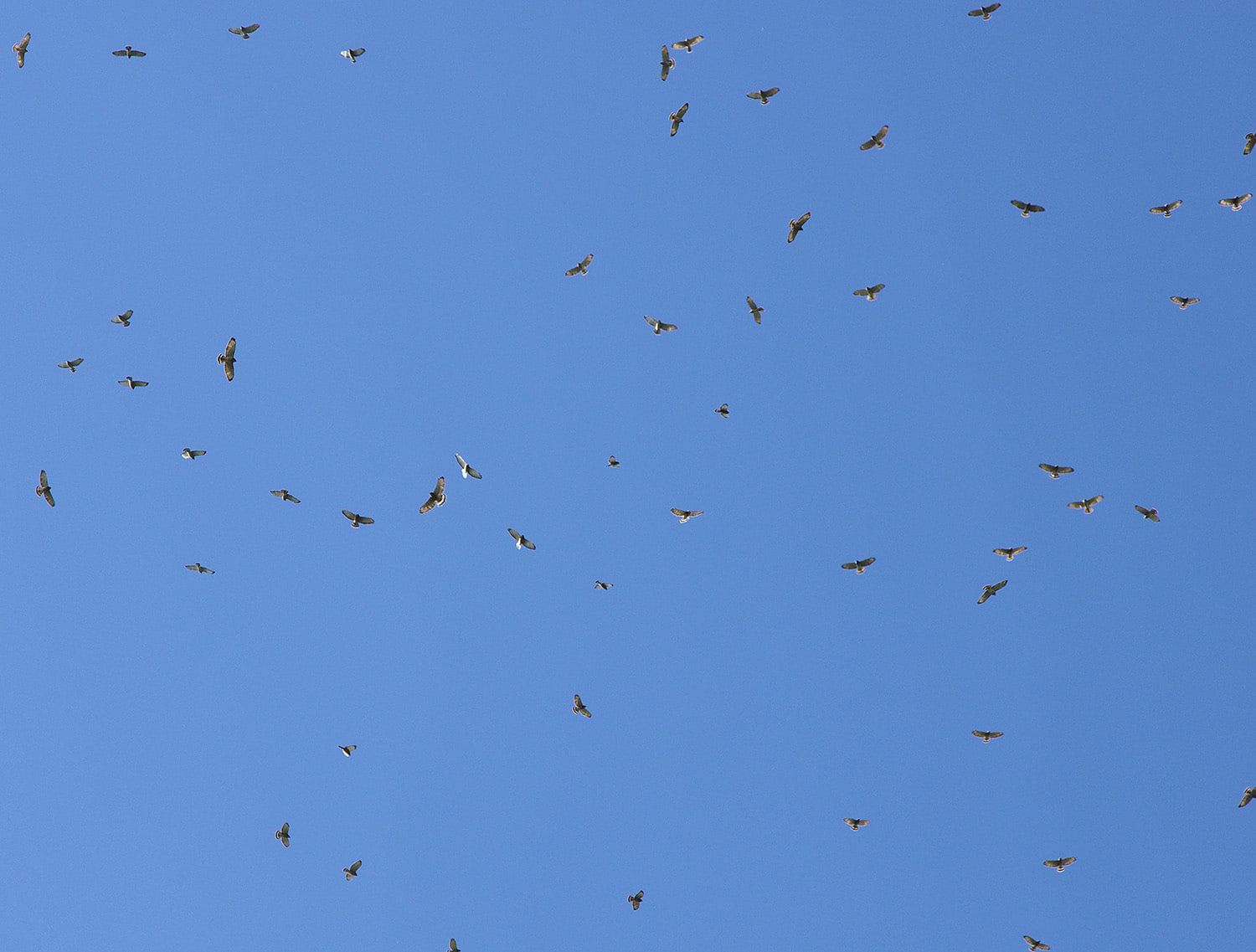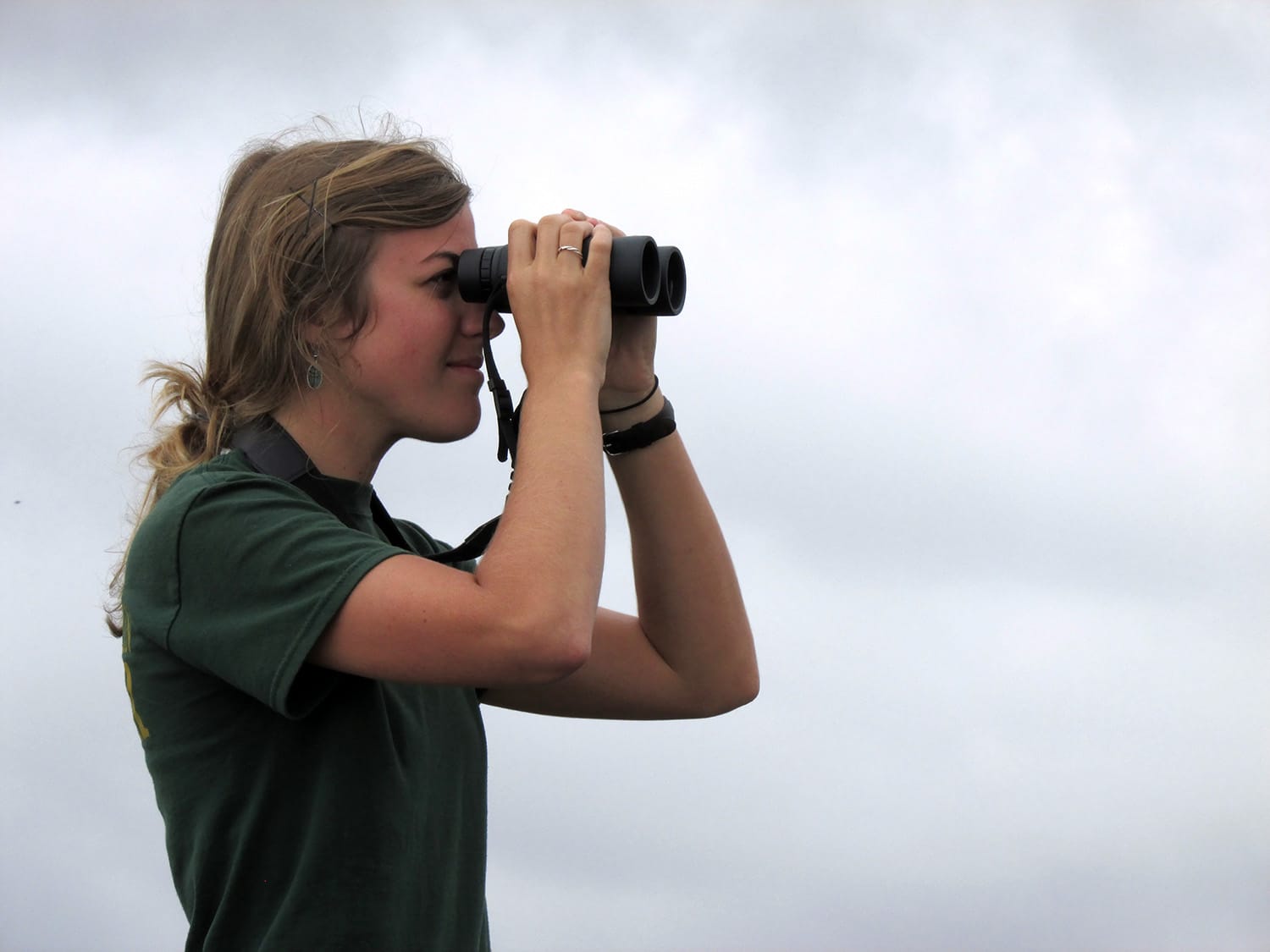Last Updated on August 29, 2016 4:18 pm
This September, Grandfather Mountain is keeping its eyes on the skies.
Hundreds or even thousands of raptors will soar over Grandfather Mountain throughout September, as the birds of prey make their annual southward migrations.
“Many people recall the days of hang-gliding on Grandfather Mountain,” said Mickey Shortt, director of education and natural resources for the Grandfather Mountain Stewardship Foundation, the nonprofit organization that oversees the popular Linville travel attraction and nature preserve. “For years, Grandfather has hosted another flight over its peak: the migration of raptors in the fall.”
Throughout the month, visitors can join trained staff and volunteers at Linville Peak, as Grandfather Mountain participates in the official Hawk Watch for the fifth consecutive year.
Each day, trained counters will record the number and type of raptors that pass above the mountain, including bald eagles, golden eagles, peregrine falcons, red-tailed hawks, American kestrels, merlins and vultures.

Grandfather Mountain guests can watch the official counters at work and talk with volunteers about the process, or they can purchase illustrated bird guides from the Nature Museum gift shop and conduct their own unofficial counts.
“I still get excited to see one raptor soaring overhead,” Shortt said. “To see hundreds or thousands in one location is absolutely incredible!”
Perhaps the most astounding display is the broad-winged hawk, which migrates in groups of hundreds or thousands called kettles. Those sightings are most common around the second to third week of September. During last year’s Hawk Watch, Grandfather Mountain executive director Jesse Pope spotted a kettle of some 4,800 broad-wings passing over in less than 30 minutes, along numerous other kettles of considerable size, adding up to 9,737 raptors in one day.
“The hawk migration is one of those natural phenomena that occur every year without many people noticing,” Shortt said. “Grandfather Mountain provides an opportunity to witness the migration if you wait patiently.”
Each fall, thousands of raptors migrate from Canada and the eastern seaboard along the Appalachian Mountains to Central and South America. The birds use thermal air columns to gain lift and glide above the peaks toward their warmer destinations.
Grandfather Mountain is a prime spot for viewing, because it sits along the eastern escarpment of the Appalachian Mountains, and its rocky peaks generate strong thermals and allow prime visibility.
“Grandfather Mountain’s rocky outcroppings create excellent thermals for raptors to use on their southbound journey,” Shortt said. “Hawk migration is a natural indicator of things changing — marking a shift from long summer days to the cooler, crisper days of autumn.”
Grandfather Mountain is one of more than 275 Hawk Watch sites officially designated by the Hawk Migration Association of North America.
In fall 2015, staff and volunteers counted 10,724 raptors in 130.5 hours of observation at Grandfather Mountain. The vast majority were broad-winged hawks, with 10,615 counted, although 27 bald eagles and 22 ospreys were also spotted.
Aside from offering a visual spectacle, the Hawk Watch serves an important purpose. The annual counts from Grandfather Mountain and other locations help track hawk populations and migration routes over time and provide important data to inform land management decisions.

Counts will be conducted every day the weather permits — the hawks don't typically fly in fog or storms — and will be posted daily at HawkCount.org.
Hawk Watch typically peaks from Sept. 17 to 25, which Shortt said is the ideal time for visitors to witness the spectacle.
Experienced hawk spotters may contact Shortt at mickey@grandfather.com, or call (828) 733-2013 to volunteer with the Hawk Watch.
The not-for-profit Grandfather Mountain Stewardship Foundation strives to inspire conservation of the natural world by helping guests explore, understand and value the wonders of Grandfather Mountain. For more information, call (800) 468-7325, or visit www.grandfather.com to plan a trip.















